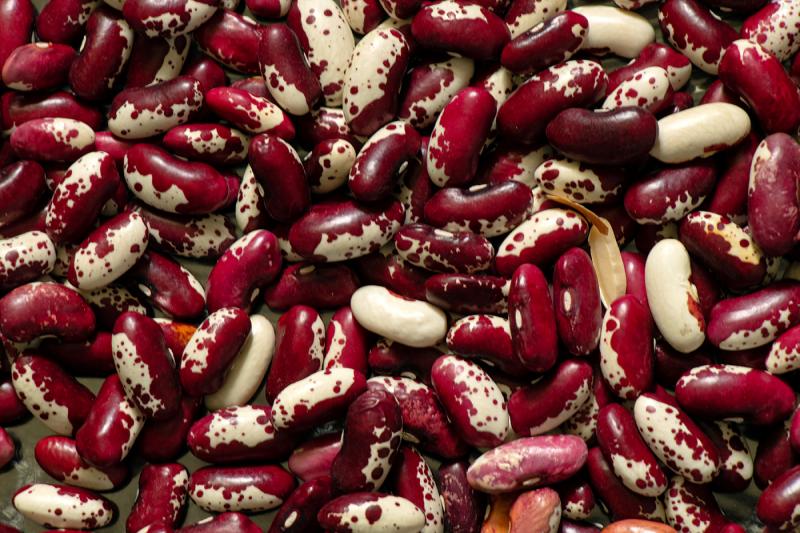Sometimes families adopt people, and sometimes people adopt families. One family I adopted is the Rockwells. They seemed like my crazy family, only more fun. The Rockwell name is widespread and famous, and one of Norman Rockwell’s most moving paintings, 1961’s “The Golden Rule,” shows an international, multiracial crowd standing together behind the words, “Do unto others as you would have them do unto you.” Rockwell read up on comparative religion and was struck that every one of the major religions has the Golden Rule in common.
Sharing food is always a good way to share humanity, and Rockwell beans are heirloom beans named after pioneer Elisha Rockwell. He brought them to Central Whidbey Island in Washington state in the late 1800s.
These beans are popular because they germinate in cool soil, mature early, and most of all, because of their delicious flavor. They are locally famous for baked beans, which hold their shape when cooked.
These are creamy-white beans that have a mottled burgundy spot around the hilum. Rockwell beans are usually grown for use as dry beans, which are beans grown to full maturity, and picked in the fall after the pods have ripened and the leaves of the plant have died.
Seeds for Rockwell beans can be hard to find but they’re worth the search. Try True Love Seeds (www.trueloveseeds.com). Bean seeds will rot in cold soil, so plant Rockwell beans after the last frost and after the ground has warmed up.
Coat the bean seeds with an inoculant before planting, which is Rhizobium bacteria. Buy bean inoculant from the seed company or farm store where you buy your bean seeds. After the inoculant is released into the soil, it will remain and multiply.
Sow bean seeds about an inch deep, 1 1/2 inches apart in rows 24 to 36 inches apart. Thin to 6 inches between plants. Beans grow best in slightly acidic to neutral soil, with a pH between 6 and 7. Do not plant beans in nitrogen-rich soil, because it will cause the plants to produce lots of leaves but few beans. Beans live with mutually beneficial soil microorganisms, and these nitrogen-fixing bacteria produce the soil-based nitrogen beans need.
Do not work around bean plants when they are wet or you might spread fungal disease spores. Because beans are susceptible to several soil-borne diseases, do not plant beans in the same spot more than every three years.
To harvest Rockwell beans for baked beans, let them dry until they rattle in the pod. Pull up the entire plant and hang it from its roots to finish drying. If your beans are soft to the bite, let them dry longer until they are firm before storing them.
To save seeds, pick the beans when their shells have become crisp and dry. Lay out the bean pods in a dry, sunny place to dry completely.
To kill any bugs such as the bean weevil, freeze your Rockwell beans for a few days.
Add beans to corn, rice or other grains to make a complete protein. Rockwell beans are high in B vitamins, folic acid, calcium, iron, selenium, potassium and magnesium, and are high in fiber.
Plant Rockwell beans and enjoy many a hearty winter baked bean fest surrounded by friends and family, and do unto them as you want them to treat you.




















































